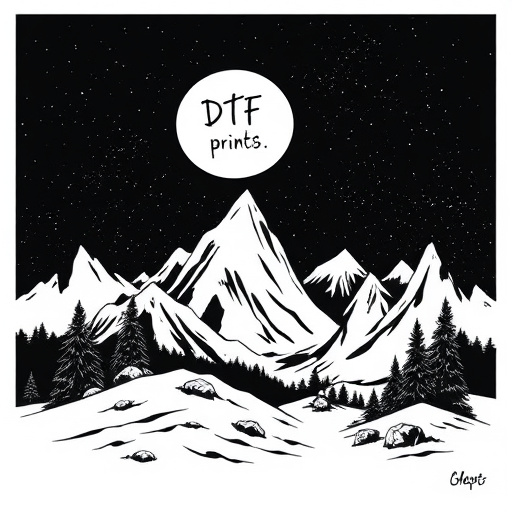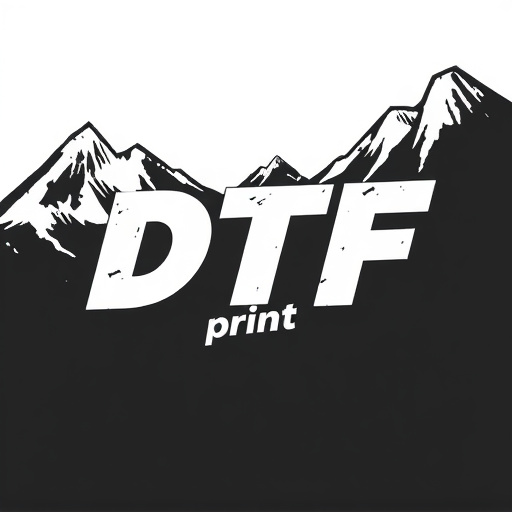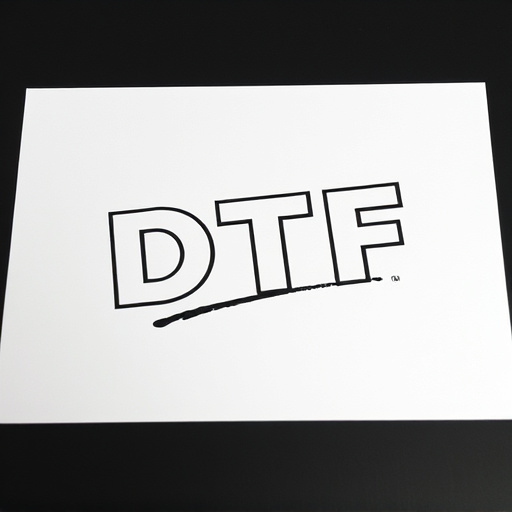Direct-to-Fabric (DTF) printing has revolutionized textile production by offering high-quality, vibrant prints on synthetic fabrics. This technique is ideal for various applications due to its ability to handle diverse fabric types, from lightweight clothing to heavy outdoor gear. Key benefits include crisp resolution, color accuracy, and resistance to fading or smudging. The success of DTF printing depends on understanding fabric properties, proper surface preparation, and using the right printers and settings. Post-printing curing and care instructions further ensure long-lasting results. DTF prints are widely used in sportswear and outdoor gear, enhancing both performance and aesthetics.
“Unleash the potential of synthetic fabrics with DTF (Direct-to-Fabric) printing, a game-changer in textile technology. This comprehensive guide explores the compatibility and unique properties of DTF prints on various synthetic materials. From understanding the printing process to optimizing surface preparation and post-printing care, we delve into the factors ensuring exceptional print quality. Discover real-world applications and case studies, showcasing how DTF Prints revolutionize the fashion and design industries with vibrant, durable results.”
- Understanding DTF Prints and Their Unique Properties
- Common Synthetic Fabrics and Their Compatibility with DTF Printing
- Factors Affecting Print Quality on Synthetic Materials
- Best Practices for Preparing Synthetic Fabric Surfaces Before Printing
- Post-Printing Considerations: Curing, Washing, and Care Guidelines
- Real-World Applications and Case Studies of DTF Prints on Synthetic Fabrics
Understanding DTF Prints and Their Unique Properties

Direct to fabric (DTF) printing has emerged as a game-changer in the textile industry, offering unique properties that make it an attractive option for various synthetic fabric applications. This innovative technique involves transferring ink directly onto the fabric surface, creating vibrant and durable designs. One of the key advantages of DTF prints is their exceptional color accuracy, ensuring that the digital design is accurately replicated on the final product.
Furthermore, DTF Prints provide a range of benefits specific to synthetic fabrics. Synthetic materials, known for their durability and versatility, offer a smooth surface ideal for precise ink adhesion. This results in crisp, high-resolution prints that are resistant to fading or smudging. The process is also versatile, accommodating various fabric types, weights, and finishes, making it suitable for everything from lightweight clothing to heavy-duty outdoor gear.
Common Synthetic Fabrics and Their Compatibility with DTF Printing

In the realm of synthetic fabrics, several commonly used materials have unique properties that impact their compatibility with Direct to Fabric (DTF) printing techniques. Polyester, for instance, is a popular choice due to its durability and ability to withstand high temperatures, making it ideal for DTF prints. Its smooth surface ensures consistent ink transfer, resulting in vibrant and detailed designs. Another widely used fabric is nylon, known for its strength and flexibility; however, it requires careful consideration as certain types of nylon may not adhere well to the printing surface, potentially affecting print quality.
Acrylic fabrics present both opportunities and challenges. Their soft texture lends itself well to creating intricate patterns, but they can be more delicate than polyester or nylon. Acrylics may require specific DTF printers and settings to achieve optimal results without smudging or fading. Spandex, with its stretchability, offers a unique compatibility challenge as it needs to maintain shape during printing while allowing for subsequent flexibility in the final product. Proper preparation and testing are essential when working with spandex to ensure the DTF prints remain crisp and do not lose their elasticity.
Factors Affecting Print Quality on Synthetic Materials

The quality of prints on synthetic fabrics, such as those used in DTF (Direct to Fabric) printing, is significantly influenced by several factors. One of the primary considerations is the fabric’s composition and structure. Different synthetic materials have varying levels of absorbency, which directly impact ink adhesion and color vibrancy. For instance, polyester fabrics tend to offer better ink retention due to their smooth surface and moisture-repellent properties, resulting in more vibrant and durable prints.
Another crucial aspect is the preparation of the fabric surface before printing. Proper cleaning and pre-treatment are essential to eliminate any contaminants or oils that could hinder ink bonding. This includes using appropriate cleaners and ensuring the fabric is free from wrinkles or imperfections. Additionally, the printing technique itself plays a significant role; high-resolution printers with precise nozzle technology can produce finer details and more accurate color representation on synthetic materials, enhancing the overall print quality.
Best Practices for Preparing Synthetic Fabric Surfaces Before Printing

Preparing synthetic fabric surfaces for DTF (Direct-to-Fabric) prints is a critical step to ensure optimal results and long-lasting durability. Begin by cleaning the fabric thoroughly with a mild detergent or specialized fabric cleaner to remove any oils, dirt, or previous coatings that might hinder adhesion. It’s essential to follow the manufacturer’s guidelines for proper material handling to avoid damaging the synthetic fibers.
Once cleaned, consider using a suitable primer or bonding agent designed specifically for synthetic fabrics. This step enhances surface reactivity, allowing inks or dyes to bond more effectively during printing processes like DTF. Proper surface preparation not only improves print quality but also guarantees that designs are vibrant, long-lasting, and resistant to fading or smudging.
Post-Printing Considerations: Curing, Washing, and Care Guidelines

After the printing process with Direct-to-Fabric (DTF) techniques, proper curing is essential to ensure the ink adheres well to the synthetic fabric. Curing involves heating the printed material to set the ink permanently. Different inks and fabrics may have varying cure requirements, so it’s crucial to follow the manufacturer’s guidelines for optimal results. A complete cure ensures vibrant colors and prevents smudging or fading.
Washing and care instructions play a significant role in maintaining the quality of synthetic fabric prints. Most DTF printed fabrics are durable but require specific handling. Care guidelines include washing instructions, such as using cold water and mild detergents, to prevent ink migration and color bleeding. Proper care ensures the longevity of the print, preserving its vibrancy and preventing damage or discoloration over time.
Real-World Applications and Case Studies of DTF Prints on Synthetic Fabrics

In recent years, Direct-to-Fabric (DTF) printing has gained significant traction in various real-world applications, showcasing its versatility and effectiveness on synthetic fabrics. From apparel to home textiles, DTF technology has revolutionized product design and development, enabling intricate patterns and vibrant colors that were once challenging to achieve. Case studies highlight the successful integration of DTF prints in high-performance sportswear, where detailed graphics enhance both aesthetics and functionality, ensuring athletes stay comfortable and visible during training and competitions.
Moreover, synthetic fabric manufacturers have embraced DTF printing for creating durable, water-resistant outdoor gear, such as camping tents and backpack materials. These applications demand exceptional colorfastness and resistance to fading, which DTF technology provides. Real-world examples demonstrate how DTF prints can withstand harsh weather conditions, ensuring the longevity of these products. As synthetic fabrics continue to evolve, DTF printing remains a game-changer, offering endless creative possibilities for designers and manufacturers alike.














